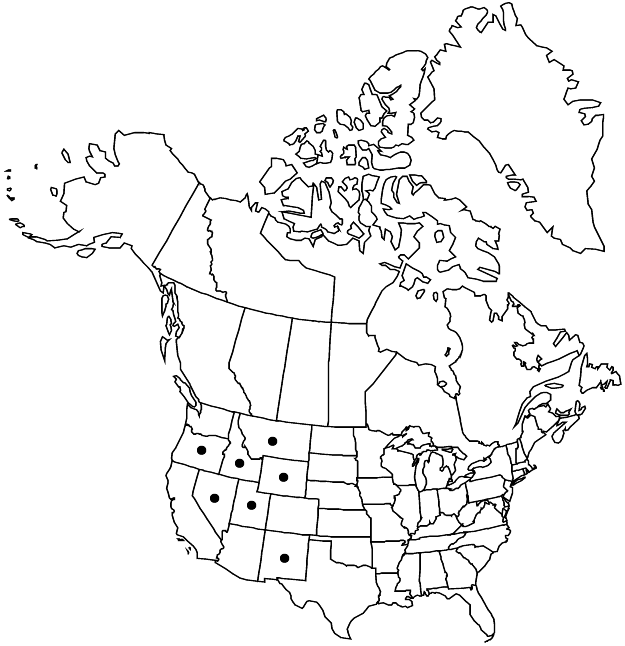Sedum debile
Botany (Fortieth Parallel), 102. 1871,.
Herbs, perennial, tufted, glabrous. Stems decumbent, branched, bearing erect rosettes. Leaves opposite and decussate (rarely alternate), ascending, sessile; blade pale green, speckled with pink, sometimes pink or red, glaucous, usually elliptic, oblanceolate, or obovate, sometimes ovate-elliptic, subterete, ± globular, 4.2–7.2 × 2.8–4.3 mm, base not spurred, (clasping), not scarious, apex widely rounded or sometimes weakly emarginate, (surfaces minutely papillose). Flowering shoots erect, decumbent, or ascending, simple, 3–12 cm; leaf blades ovate-elliptic, base not spurred; offsets not formed. Inflorescences cymes, 2–7-flowered, 2-branched; branches not recurved, forked; bracts similar to leaves, smaller. Pedicels to 1.2 mm. Flowers 5-merous; sepals erect, connate basally, pale green, glaucous, lanceolate, equal, 2–4.2 × 1.3–2 mm, apex obtuse, (papillose); petals basally erect, distally spreading, connate basally, yellow, elliptic-lanceolate, slightly carinate, 6–9 mm, apex obtuse with mucronate appendage; filaments yellow; anthers yellow, (sometimes compressed and winged); nectar scales yellow, orange-red, or salmon-pink, reniform to square. Carpels erect or ascending in fruit, connate basally, straw colored with purple stripes. 2n = 14–18.
Phenology: Flowering summer.
Habitat: Open, rocky places
Elevation: 1500-3500 m
Distribution

Idaho, Mont., Nev., N.Mex., Oreg., Utah, Wyo.
Discussion
The axillary, almost globular, rosettes of Sedum debile are the primary mode of propagation in this species (R. T. Clausen 1975).
Selected References
None.